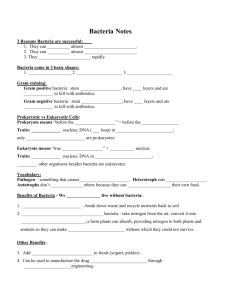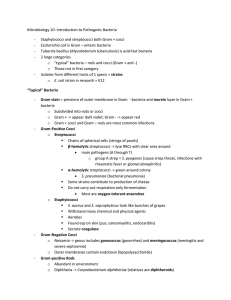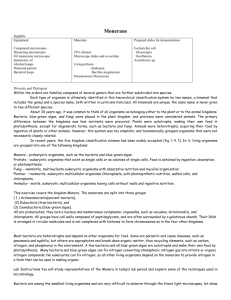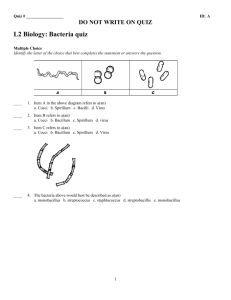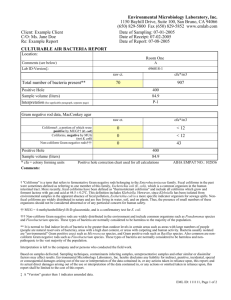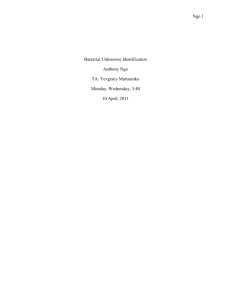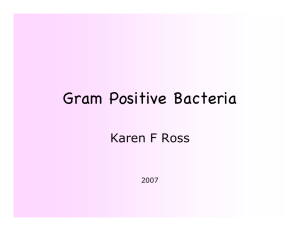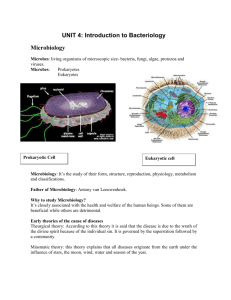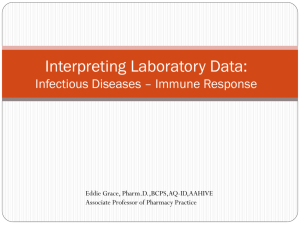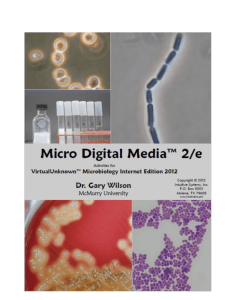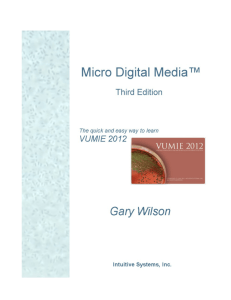Bacteria (Notes)
advertisement
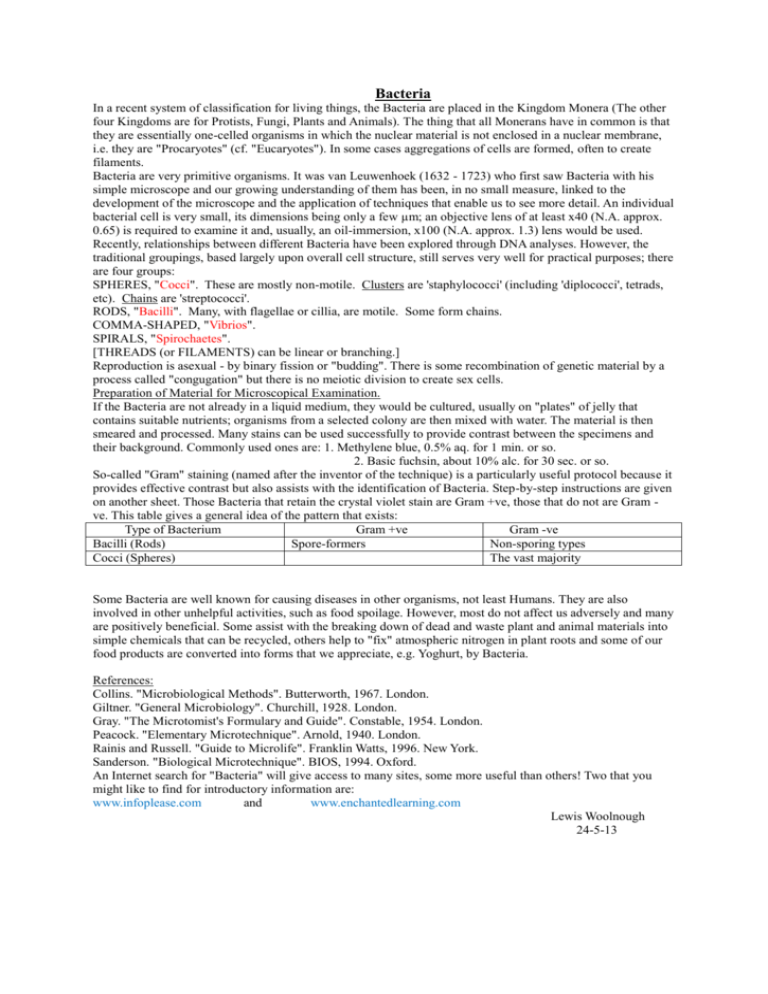
Bacteria In a recent system of classification for living things, the Bacteria are placed in the Kingdom Monera (The other four Kingdoms are for Protists, Fungi, Plants and Animals). The thing that all Monerans have in common is that they are essentially one-celled organisms in which the nuclear material is not enclosed in a nuclear membrane, i.e. they are "Procaryotes" (cf. "Eucaryotes"). In some cases aggregations of cells are formed, often to create filaments. Bacteria are very primitive organisms. It was van Leuwenhoek (1632 - 1723) who first saw Bacteria with his simple microscope and our growing understanding of them has been, in no small measure, linked to the development of the microscope and the application of techniques that enable us to see more detail. An individual bacterial cell is very small, its dimensions being only a few µm; an objective lens of at least x40 (N.A. approx. 0.65) is required to examine it and, usually, an oil-immersion, x100 (N.A. approx. 1.3) lens would be used. Recently, relationships between different Bacteria have been explored through DNA analyses. However, the traditional groupings, based largely upon overall cell structure, still serves very well for practical purposes; there are four groups: SPHERES, "Cocci". These are mostly non-motile. Clusters are 'staphylococci' (including 'diplococci', tetrads, etc). Chains are 'streptococci'. RODS, "Bacilli". Many, with flagellae or cillia, are motile. Some form chains. COMMA-SHAPED, "Vibrios". SPIRALS, "Spirochaetes". [THREADS (or FILAMENTS) can be linear or branching.] Reproduction is asexual - by binary fission or "budding". There is some recombination of genetic material by a process called "congugation" but there is no meiotic division to create sex cells. Preparation of Material for Microscopical Examination. If the Bacteria are not already in a liquid medium, they would be cultured, usually on "plates" of jelly that contains suitable nutrients; organisms from a selected colony are then mixed with water. The material is then smeared and processed. Many stains can be used successfully to provide contrast between the specimens and their background. Commonly used ones are: 1. Methylene blue, 0.5% aq. for 1 min. or so. 2. Basic fuchsin, about 10% alc. for 30 sec. or so. So-called "Gram" staining (named after the inventor of the technique) is a particularly useful protocol because it provides effective contrast but also assists with the identification of Bacteria. Step-by-step instructions are given on another sheet. Those Bacteria that retain the crystal violet stain are Gram +ve, those that do not are Gram ve. This table gives a general idea of the pattern that exists: Type of Bacterium Gram +ve Gram -ve Bacilli (Rods) Spore-formers Non-sporing types Cocci (Spheres) The vast majority Some Bacteria are well known for causing diseases in other organisms, not least Humans. They are also involved in other unhelpful activities, such as food spoilage. However, most do not affect us adversely and many are positively beneficial. Some assist with the breaking down of dead and waste plant and animal materials into simple chemicals that can be recycled, others help to "fix" atmospheric nitrogen in plant roots and some of our food products are converted into forms that we appreciate, e.g. Yoghurt, by Bacteria. References: Collins. "Microbiological Methods". Butterworth, 1967. London. Giltner. "General Microbiology". Churchill, 1928. London. Gray. "The Microtomist's Formulary and Guide". Constable, 1954. London. Peacock. "Elementary Microtechnique". Arnold, 1940. London. Rainis and Russell. "Guide to Microlife". Franklin Watts, 1996. New York. Sanderson. "Biological Microtechnique". BIOS, 1994. Oxford. An Internet search for "Bacteria" will give access to many sites, some more useful than others! Two that you might like to find for introductory information are: www.infoplease.com and www.enchantedlearning.com Lewis Woolnough 24-5-13




